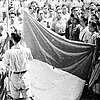Yogyakarta and Surakarta Offensive
| Yogyakarta and Surakarta | |||||||
|---|---|---|---|---|---|---|---|
| Part of Indonesian National Revolution | |||||||
| |||||||
| Belligerents | |||||||
|
|
Royal Netherlands East Indies Army | ||||||
| Commanders and leaders | |||||||
|
Lieutenant General Soedirman Colonel Bambang Soegeng Colonel Gatot Subroto Lieutenant Colonel Suharto Lieutenant Colonel Slamet Riyadi Major |
Major General Dirk Reinhard Adelbert van Langen Major General Major General Meyer Lieutenant Colonel J.M. v/d Berge Lieutenant Colonel | ||||||
| Strength | |||||||
| 20,000–40,000 |
2,000–3,000 Royal Netherlands Army and Royal Netherlands East Indies Army 325 KST troops | ||||||
| Casualties and losses | |||||||
| ~800–900 dead, among them an unknown number of non-combatants | 3 soldiers were killed and 3 policemen, 14 soldiers got injured,3 RST troops wounded | ||||||
The Yogyakarta and Surakarta Offensive (Serangan Oemoem: Indonesian) were two major offensives during the Indonesian National Revolution. The offensive started with General Offensive of 1 March 1949 and the Siege of Surakarta. Each proved a major boast for the moral of the TNI despite major defeats in both actions.
General Offensive of 1 March 1949[]
In early 1949, Hamengkubuwono IX conceived the idea of a major offensive to be launched against Yogyakarta and the Dutch troops occupying it. The purpose of this offensive was to show to the world that Indonesia still existed and that it was not ready to surrender. The Offensive caught the Dutch by surprise. For his part, Hamengkubuwono IX allowed his palace to be used as a hide out for the troops. For 6 hours, the Indonesian troops had control of Yogyakarta before finally retreating. The offensive was a moral success, inspiring demoralized troops all around Indonesia. It failed in its attempt to show the world that the Indonesian army still existed. Not much attention was paid to it by the United Nations.
Surakarta insurgency[]
The Indonesian officers and Pakubuwono XII, strategically planned to use the opportunity before the ceasefire announced by Sudirman, to gain position and seize the enemy's position in Surakarta. The attack was directly supported by Pakubuwono XII by hiding several Indonesian troops in his palace. The planned attack was intended to let the Dutch know that Indonesia still had fangs. The Dutch were shocked by this attack, and ended with the failure of the Royal Dutch Army to defend Surakarta, shaking the confidence of the Dutch Parliament in the performance of its troops. This forced the Dutch prime minister to accommodate the demands of the Indonesian delegation as a condition before they were willing to attend the Round Table Conference.
Aftermath[]
This last battle of the RST showed again the qualitative superiority of the KST/RST on the Indonesian nationalist fighters. The leader of the raid on Surakarta on August 7, 1949 was Lieutenant Colonel Slamet Riyadi. To commemorate this event, the main street of the city of Surakarta was renamed "Brigadier General Slamet Riyadi Street".
References[]
This section is empty. You can help by . (March 2015) |
- Conflicts in 1949
- Indonesian National Revolution
- 1949 in Indonesia

